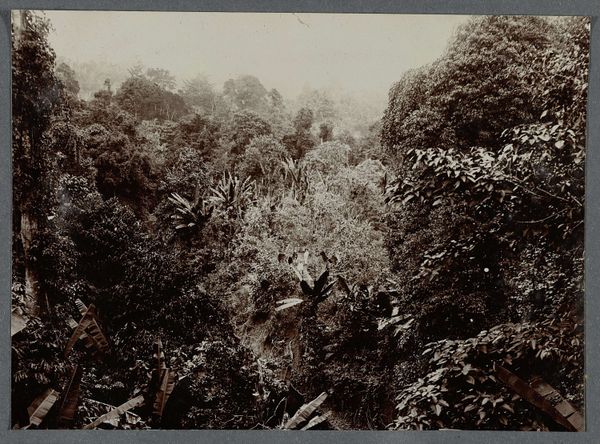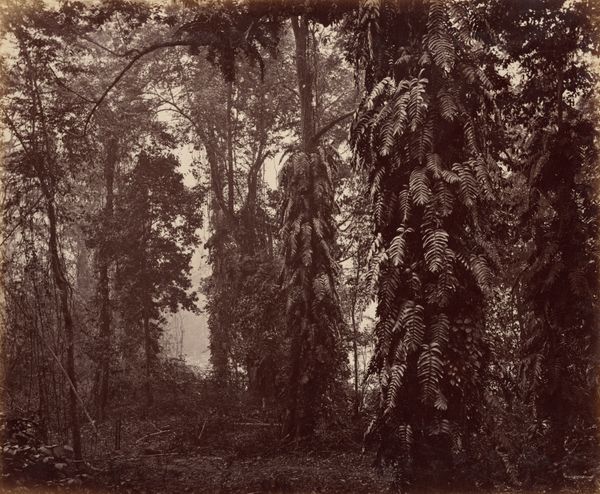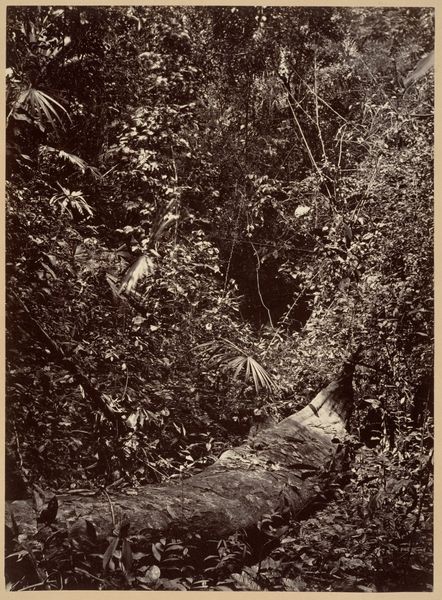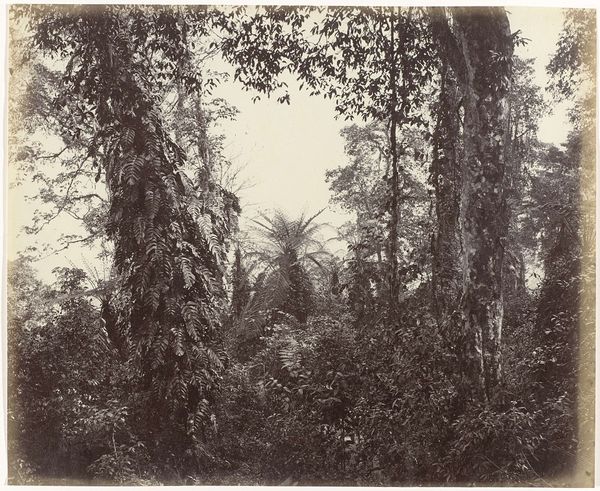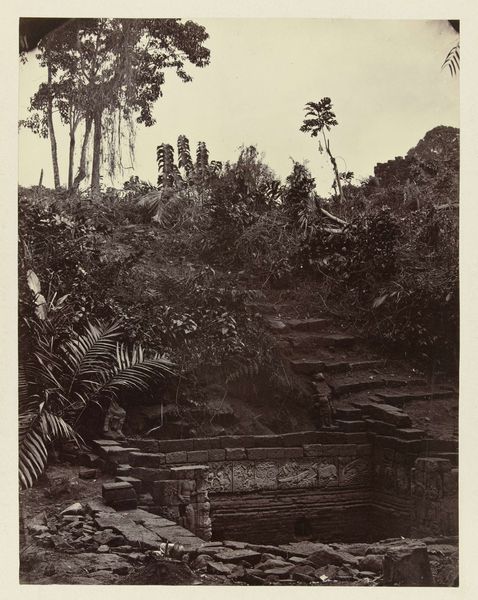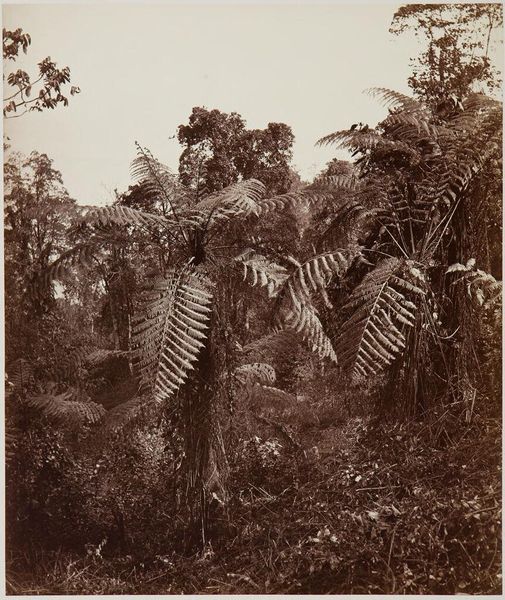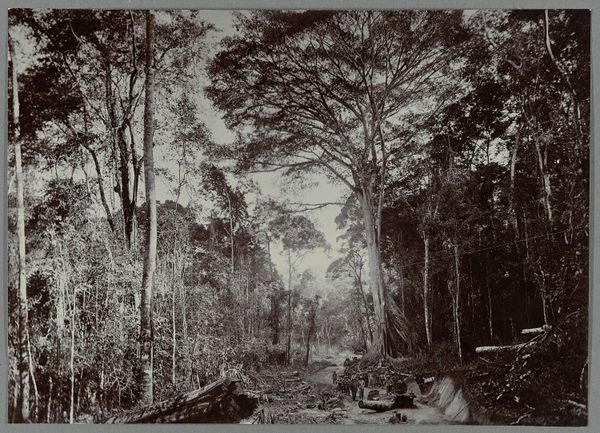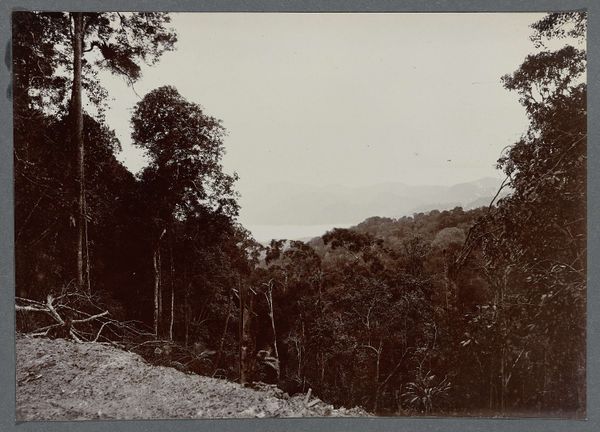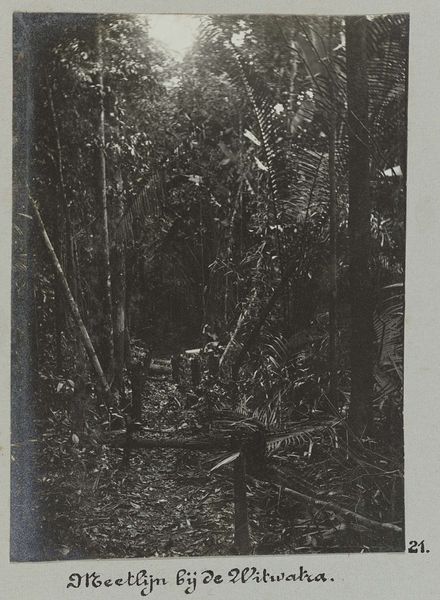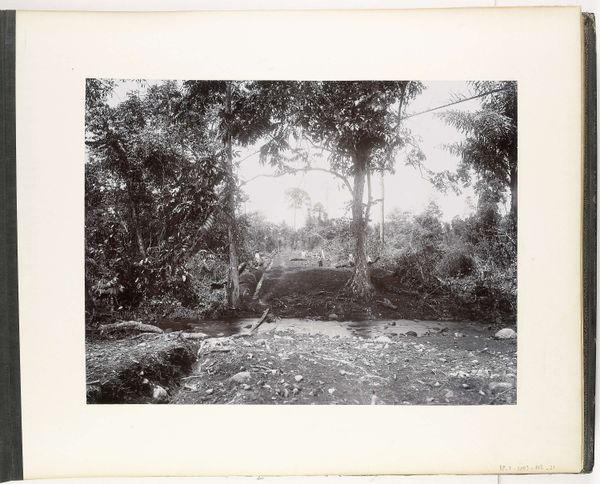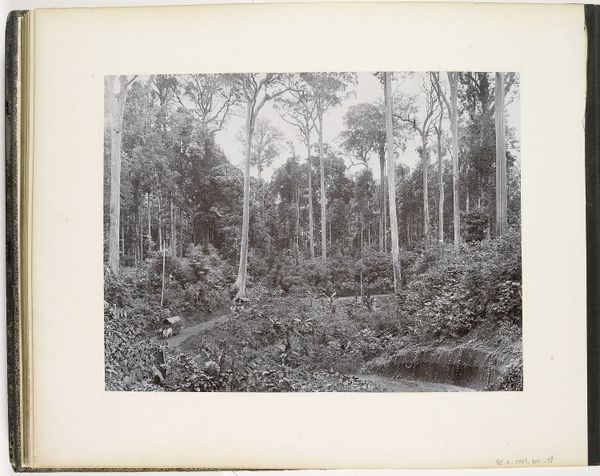
Dimensions: height 138 mm, width 200 mm
Copyright: Rijks Museum: Open Domain
Editor: Here we have an early 20th-century photograph titled "Boslandschap," placing it between 1903 and 1913. It’s attributed to an anonymous artist, and it appears to be a landscape rendered with photography, possibly utilizing some kind of mixed media to give it this distinct look. I'm struck by how dense and almost impenetrable the scene appears. What do you see in this piece that informs its historical context? Curator: It's interesting you say impenetrable. Consider this image against the backdrop of the early 20th century. Photography, especially of landscapes, was gaining traction not just as art but as a tool of documentation, even control. How does the lack of human presence – no clear paths, no visible interventions – speak to anxieties or aspirations surrounding nature at that time? Editor: I suppose the absence highlights nature’s power. Maybe there's a deliberate avoidance of portraying human impact in the landscape? Was this a common approach back then? Curator: Often, yes. Early landscape photography was used both to promote an image of untouched wilderness – think of the American West – and, conversely, to survey and map resources. So, the choice of what to show, or not show, was always loaded. Does this image strike you as neutral or advocating a certain view of nature? Editor: Definitely not neutral. The density almost feels overwhelming, maybe even romanticized, hinting at something wild and untamed, maybe like a hidden world. It seems to be making a deliberate artistic statement. Curator: Precisely! Consider how the 'art photography' movement, Pictorialism, embraced soft focus and manipulated prints to mimic painting. "Boslandschap" leans into that aesthetic. Its impact hinges on invoking an emotional or atmospheric response. This image presents nature as something more than just a resource or a vista; it’s presented almost as a spiritual or emotional space. So, how do you think this intersects with the growing urbanism and industrialization of the period? Editor: It becomes a kind of retreat, almost? A reminder of what's being lost. I see now it is not just a landscape. It’s loaded with commentary about the culture of the time. Curator: Indeed. And this brings in consideration about photographic processes of the time, artistic interventions, and social context of "returning" to a spiritual space and nature in early 20th-century Netherlands. There are interesting layers there to explore further. Editor: It definitely gives a richer understanding. I was stuck on just its aesthetic qualities before. Thanks for highlighting those different perspectives!
Comments
No comments
Be the first to comment and join the conversation on the ultimate creative platform.

